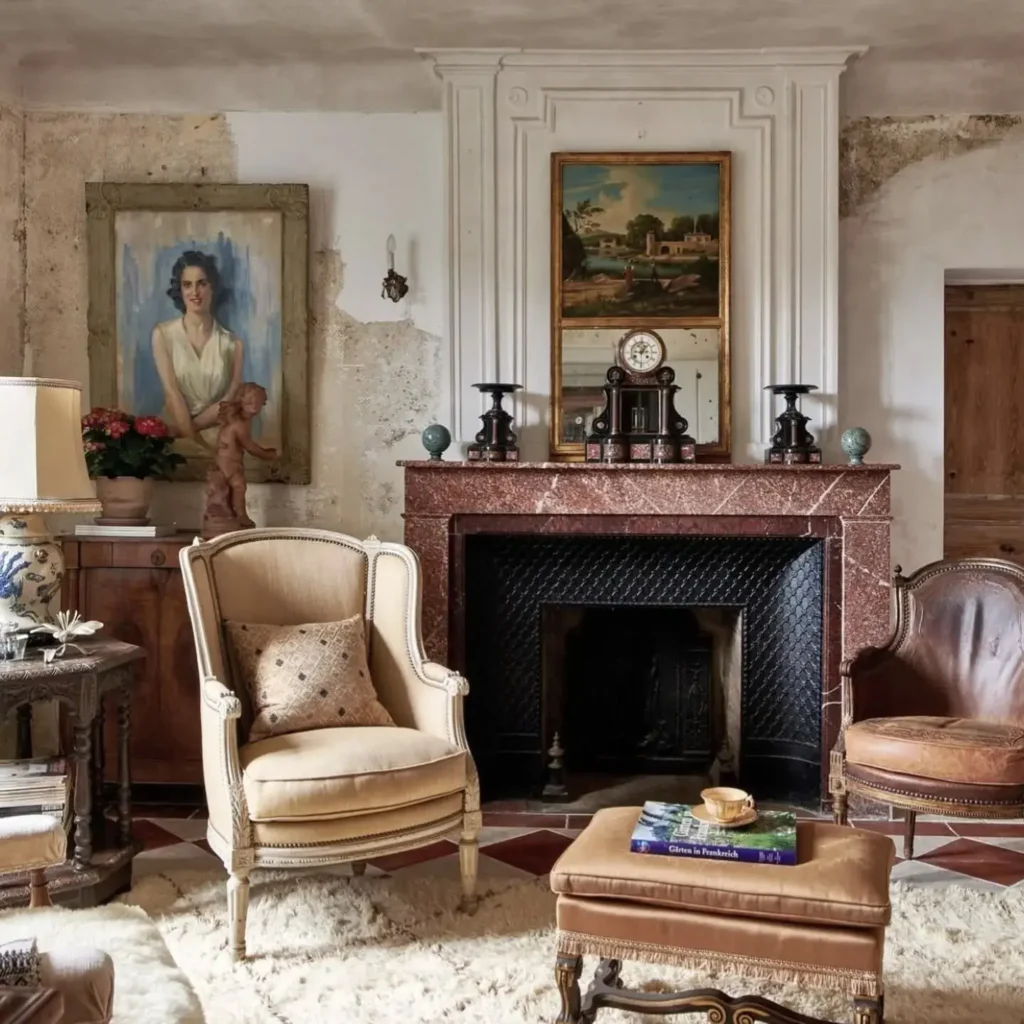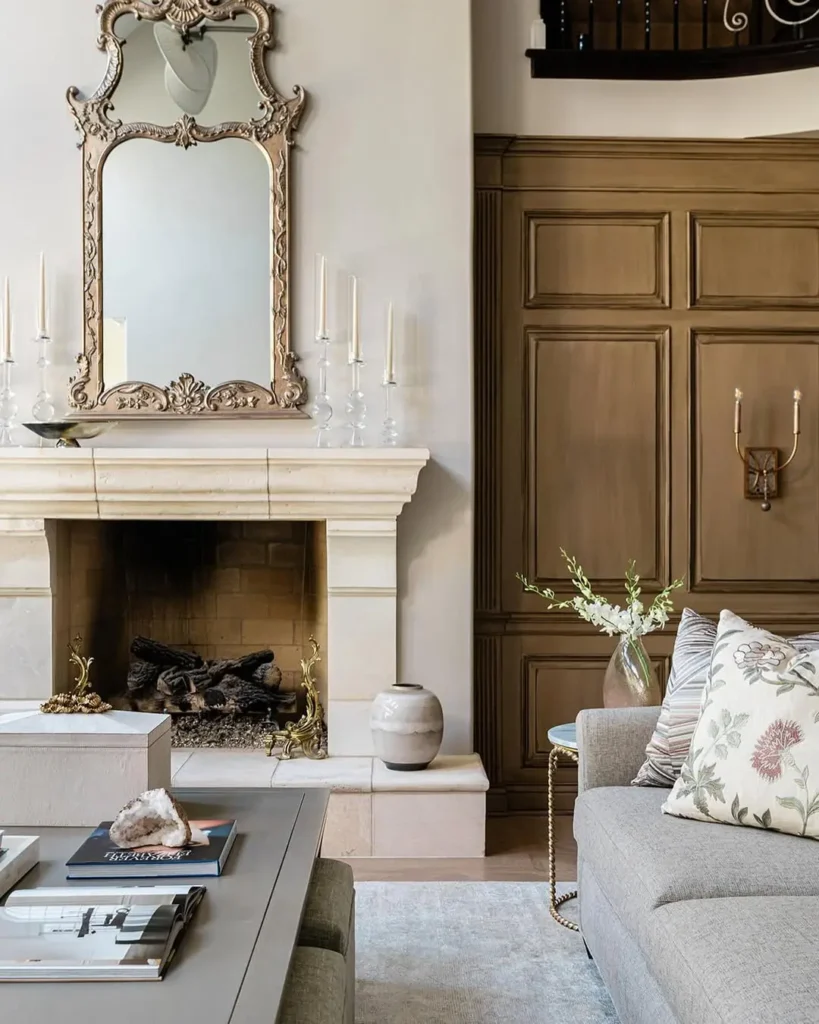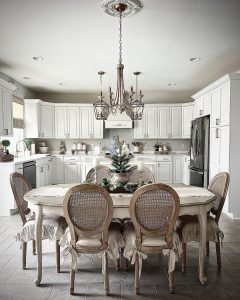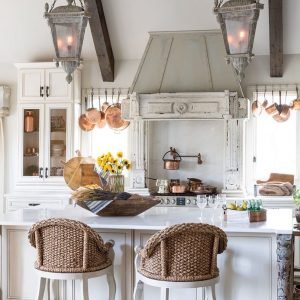There’s something timeless about the French countryside. Its soft, sun-drenched palette never goes out of style. If you’re drawn to that quiet charm, you’re not alone. Many homeowners are now asking how to bring it home. That’s where this guide, “French Country Colors: How to Pick the Right Palette,” comes in.
Color is the foundation of French Country style. The right palette brings depth, charm, and a lived-in beauty that welcomes you in. Whether you’re starting fresh or refreshing one room, color sets the tone for every piece that follows.
We’ll walk through the foundation of a French Country color palette, from calming neutrals to timeworn accents inspired by the Provence landscape. You’ll also find plenty of ideas for bringing those colors into your home naturally.
What Makes French Country Colors Unique

French Country colors aren’t loud or trendy—they’re lived-in, quiet, and grounded in nature. These hues take their cues from weathered shutters, aged stone walls, woven baskets, and rolling lavender fields.
Instead of sharp contrast, this palette leans into soft harmony. You’ll see colors like muted sage, chalky white, dusty blue, buttercream yellow, and warm taupe. Each one works like a gentle whisper, adding depth without demanding attention.
This ease is what sets French Country apart. While other styles may chase crispness or polish, French Country embraces imperfection. The sun-faded look of timeworn color is what gives the style its soul.
If you love this weathered charm, you might also enjoy our guide to styling vintage furniture in a French Country living room.
Core Neutrals to Anchor Your Palette
At the heart of any French Country color palette is a foundation of soft, laid-back neutrals. These tones offer a warm backdrop that never overwhelms. They let your space breathe while setting a relaxed and welcoming tone.
Classic choices include ivory, ecru, greige, warm taupe, and stone gray. These shades work beautifully on walls, large upholstery pieces, and foundational furniture.
Painted cabinetry in creamy whites or warm gray can instantly evoke that French Country softness. Linen sofas in oat or flax tones add comfort without drawing too much attention.
Choosing Accent Colors in French Country Decor
Once your neutrals are in place, it’s time to bring in color—gently. Accent colors in French Country decor should feel as though they’ve been faded by years of sunlight and layered living.
Go for tones like muted sage green, slate blue, dusty rose, buttery yellow, and warm terracotta. These shades echo nature’s quieter side and complement rustic textures like aged wood, worn metals, and natural linen.
Try sage or pale blue for kitchen cabinetry, dusty rose for bedroom textiles, or terracotta in pottery and tile. A little goes a long way in keeping the look relaxed, not overly coordinated.
And if you’re updating the bedroom, explore our guide to elegant French Country bedroom furniture that pairs beautifully with these accent tones.
Combining Neutrals and Accents in a French Country Color Palette
The beauty of French Country style lies in how effortlessly its colors blend. Neutrals and accents aren’t meant to compete—they’re partners in creating harmony.
Try layering soft ivory walls with a greige sofa, then add a hint of dusty blue through drapery or a patterned rug. Or let warm taupe serve as your backdrop, with sage green cabinets and terra cotta tile underfoot.
Stick to two or three accent shades per room to keep the space calm and cohesive. Repeating tones in small doses—like slate blue in artwork or sage in ceramics—can create rhythm without overwhelming.
Don’t forget to include a few rustic finishes. Touches of antique brass and weathered pewter lend an understated richness that enhances the warmth of the palette.
Avoiding Common Color Mistakes
Even the most thoughtful French Country color palette can lose its charm with just a few missteps. The most common mistake? Choosing colors that are too bold or too bright. Neon, stark white, or overly saturated shades can clash with the gentle warmth this style relies on.
Stick with hues that look slightly faded or softened. If you love contrast, opt for deep, earthy tones—like weathered olive or aged plum—in small, intentional touches.
Another mistake is using too many colors at once. A good rule of thumb is three tones per space: one neutral, one main accent, and a third to add dimension.
Decorating with color doesn’t have to be overwhelming. In fact, French Country style invites you to take a slower, more thoughtful approach. If you’ve ever found yourself unsure where to start, our guide to avoiding color mistakes in home decorating can help.
To avoid these missteps, choose a clear palette before you start decorating. Let your neutral ground everything, and then build up with accent colors through textiles, art, and accessories. Keep repetition in mind—echo the same shades from one room to another for a cohesive look.
And finally, lighting matters. Be sure to view your paint samples in natural light throughout the day to see how the tones truly shift. What looks creamy in the morning might feel beige or even yellow at night.
Seasonal and Trending Takes on French Country Colors
French Country colors can shift gently with the seasons—and that’s part of their charm. In spring and summer, soft greens, pale peach, and sun-washed yellows feel right at home. These hues brighten rooms while staying rooted in nature.
In fall and winter, bring in deeper tones. Think earthy ochre, moody slate, and dusky plum. These add richness while still fitting the gentle, weathered character of the style. For a seasonal take that feels especially cozy, explore our neutral winter decor palette with a French Country twist.
One current trend that blends beautifully with French Country is chateaucore—a romantic, heirloom-inspired look that leans into creamy whites, dusty blues, and faded florals.
You can reflect the seasons without repainting—try updating pillow covers, floral arrangements, and ceramics with seasonal tones. For outdoor color inspiration, browse our tips on styling your backyard garden with French Country charm.
Step-by-Step Guide: How to Pick the Right French Country Color Palette
Ready to choose your palette? Here’s how to do it with confidence and ease:
- Start with your dominant neutral. Choose a base that feels timeless—like ecru, greige, or stone gray. This sets the backdrop for your space.
- Pick two or three accent colors. Stay within the soft, nature-inspired tones we’ve covered. Sage green, dusty rose, or slate blue can add quiet depth.
- Test your colors in natural light. Apply swatches directly to your wall and watch how they change with the light—French Country shades should feel mellow, never jarring.
- Distribute color thoughtfully. Use your neutral on walls or large furniture, then layer in accents through cabinetry, pillows, ceramics, and artwork.
- Layer with textiles and textures. Introduce color with linen drapes, vintage floral prints, or hand-glazed pottery. These subtle touches bring personality to the palette.
Implementing Your Palette Beyond Paint
Paint is just the beginning. In French Country decor, color weaves through every layer of your space—from the textiles to the finishes.
Use your chosen palette in upholstered furniture, vintage artwork, linens, and lighting fixtures. A sage velvet bench or dusty rose toile pillow can make a subtle but meaningful impact.
Distressed wood in gray-washed oak or whitewashed pine also enhances the look, adding texture and softness to the color story.
Looking for lighting that works with your palette? Explore our guide on choosing the best lighting for your French Country living room—a well-chosen fixture can pull the whole palette together.
Room-by-Room Inspiration Using French Country Colors

Every space tells a different color story. Light, layout, and function all influence how hues come to life. Here’s how to bring a cohesive French Country color palette to life, room by room:
Living Room
The living room is often the heart of the home, so aim for comfort with character. Try soft ivory or greige walls paired with a linen or oat-toned sofa. Add layers through dusty blue drapery, a warm taupe rug, and vintage wood coffee tables.
Accent chairs in a slate blue or a subtle sage check pattern keep things grounded in nature. Look for throws and pillows in faded floral or gingham prints. For more visual charm, include French Country mirrors and art in muted tones.
Explore more ways to achieve this balance in our guide on French Country living room design.
Kitchen
The kitchen is a perfect place to showcase French Country color and texture. Start with creamy white or pale stone cabinetry. Add depth with sage green or warm gray on an island or lower cabinets. Open shelving with clay or glass dishes reinforces the natural palette.
Incorporate warmth through a terracotta tile backsplash or vintage copper fixtures. Linens in soft check patterns or delicate floral motifs add subtle charm.
Our post on creating a French Country kitchen with modern appliances shows how color and contrast can still feel timeless.
Bedroom
In the bedroom, serenity is key. Opt for taupe or pale gray walls as a neutral base. Introduce dusty rose, muted lilac, or faded cornflower blue in the linens and drapery.
A vintage whitewashed armoire or bedside tables add rustic softness. Blend in textures like lace, linen, or ticking stripe bedding for that cozy lived-in feel.
For furnishing ideas, visit our post on choosing elegant French Country bedroom furniture.
Bathroom
Bathrooms can shine in subtle ways. Choose soft whites or cool grays for the walls, then add color through tilework or accessories. A pale blue vanity, vintage mirror, and blush-pink towel set can transform the smallest room into a peaceful retreat.
Muted metal finishes like brushed brass or aged bronze pair well with every shade. Need inspiration? Head over to this post on how to achieve French Country bathroom decor with color and charm.
Dining Room
Create warmth and ease in the dining space with buttery cream or stone-colored walls. Use wooden furniture with a distressed finish to anchor the room. Accent with dusty rose napkins, sage placemats, or vintage-inspired table runners.
Layer in candlelight, linen slipcovers, and a centerpiece of seasonal blooms to keep the palette feeling fresh yet timeless.
Discover how to complete the look in our post on inviting French Country dining rooms.
Outdoor Spaces
Yes—your outdoor living areas deserve color too. Think sage cushions, weathered white metal furniture, or a terracotta planter collection.
Muted greens and earth tones blend effortlessly with garden blooms. Browse ideas on styling your French Country backyard for seasonal color inspiration.
Summary & Next Steps
A well-chosen French Country color palette brings warmth, charm, and lived-in elegance to any space. Begin with a timeless neutral, then layer in two to three soft, nature-inspired accent colors. Test everything in natural light, and remember: texture and tone matter just as much as paint.
Whether you’re updating one room or dreaming up an entire home, let color guide the way. Start small, be intentional, and allow your palette to grow organically.
Continue exploring our favorite French Country decor ideas to find inspiration for every room.
And for a deeper dive, don’t miss our ultimate guide to French Country home decor and share your color journey with us along the way.
Frequently Asked Questions about French Country Colors
Can bold colors work in French Country decor?
Yes—but use them with care. Stick to small touches, like a velvet pillow or a vintage vase in deep olive or wine. The key is to balance boldness with softness.
Can I use French Country colors in a modern home?
Absolutely. French Country tones soften sharp lines and bring warmth to contemporary architecture. Pair greige or taupe with minimalist furnishings for a cozy balance.
Do I need to repaint every room to embrace French Country colors?
Not at all. Start with soft furnishings like curtains, pillows, or wall art in classic French Country colors like sage, ivory, or dusty blue. These smaller updates can set the tone without a full overhaul.
How do I keep the French Country color palette cohesive throughout the house?
Choose one or two neutrals that repeat in every space, then rotate accent colors thoughtfully. This creates flow without being too matchy.
Don’t forget to pin this post for later!




